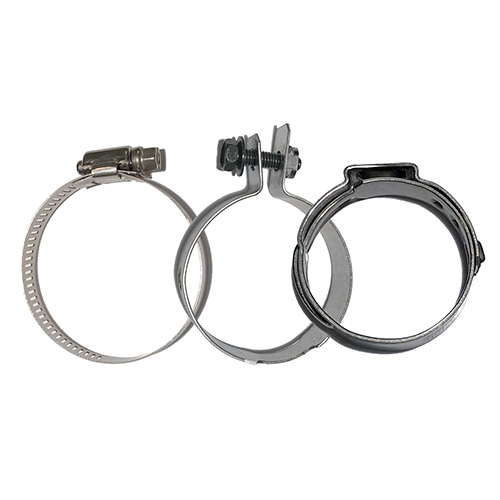Joining Solutions. How Do They Compare?
October 01.2019 | Joining Solutions

If your application is frequently exposed to atmospheric elements such as temperature fluctuations, vibration and corrosion, read on for our comparison of some of the most popular joining solutions.
1. Welding
Welding has been used to join metals since the Bronze and Iron Ages. It involves applying high heat to melt 2 or more materials together at specific spots and cooling to form a fused compound. Welding creates a very strong and durable joint when used in the right environment.
Points to consider
- It can only be used when the materials are similar. It can’t be used to fuse metal and plastic for example
- It’s best used on rigid materials. It won’t work well to fuse a malleable material to a rigid material.
- Constant exposure to temperature variations and vibration weaken the joints due to continued expansion and contraction
2. Pinch Ear Clamps
 Pinch ear clamps work by squeezing a raised portion of a metallic clamp while the clamp is around the material. This reduces its diameter as it tightens.
Pinch ear clamps work by squeezing a raised portion of a metallic clamp while the clamp is around the material. This reduces its diameter as it tightens.
Points to consider
- The clamp is only as strong as the raised point. Any impact to this part can weaken or loosen the clamp.
- Diameter reduction is very low, different sizes of clamps are needed for different applications resulting in multiple SKUs
- The thinner the clamp material the lower the tensile strength
3. Worm Gear Clamps
 Worm Gear clamps work by rotating a screw connected to a toothed wheel. This acts as a worm and tightens the band around the material being clamped. These clamps have good diameter reduction and are used primarily on hoses
Worm Gear clamps work by rotating a screw connected to a toothed wheel. This acts as a worm and tightens the band around the material being clamped. These clamps have good diameter reduction and are used primarily on hoses
Points to consider
- The clamps are usually slotted, which reduces the tensile strength
- Heat and vibration can cause the screw threading to expand, thereby loosening with time
4. Bolt Clamps
 Bolt Clamps are used to seal muffler inlets, elbow joints and pipes. These clamps are C shaped with a bolt and nut on different ends of the clamp. They work by tightening the bolt through the nut until the clamp is tight
Bolt Clamps are used to seal muffler inlets, elbow joints and pipes. These clamps are C shaped with a bolt and nut on different ends of the clamp. They work by tightening the bolt through the nut until the clamp is tight
Points to consider
- Diameter reduction is minimal, different sizes of clamps are needed for different applications
- Heat and vibration cause the screw threading to expand and contract which causes loosening with time
- Does not conform to non-circular materials
5. Tie-Lok Ties
 BAND-IT’s Tie-Lok ties are the premier choice when the application is critical with a high cost of failure. It offers a unique dimple lock with a smooth ID and a low profile, for fast, consistent and reliable clamping tension.
BAND-IT’s Tie-Lok ties are the premier choice when the application is critical with a high cost of failure. It offers a unique dimple lock with a smooth ID and a low profile, for fast, consistent and reliable clamping tension.
Points to consider
- Extreme diameter reduction allows one clamp to be used for different application sizes.
- They expand and contract with the material being clamped making them resistant to temperature variations
- They can be used to clamp both rigid and malleable material in the same joint
- Forms a low profile single wrapped assembly if space is a factor
- Available in 304 and 316 Stainless Steel to provide resistance in extreme environments
Still undecided? Contact us here and a specialist will be happy to speak with you. For more information on BAND-IT® Tie Lok® Ties, click here